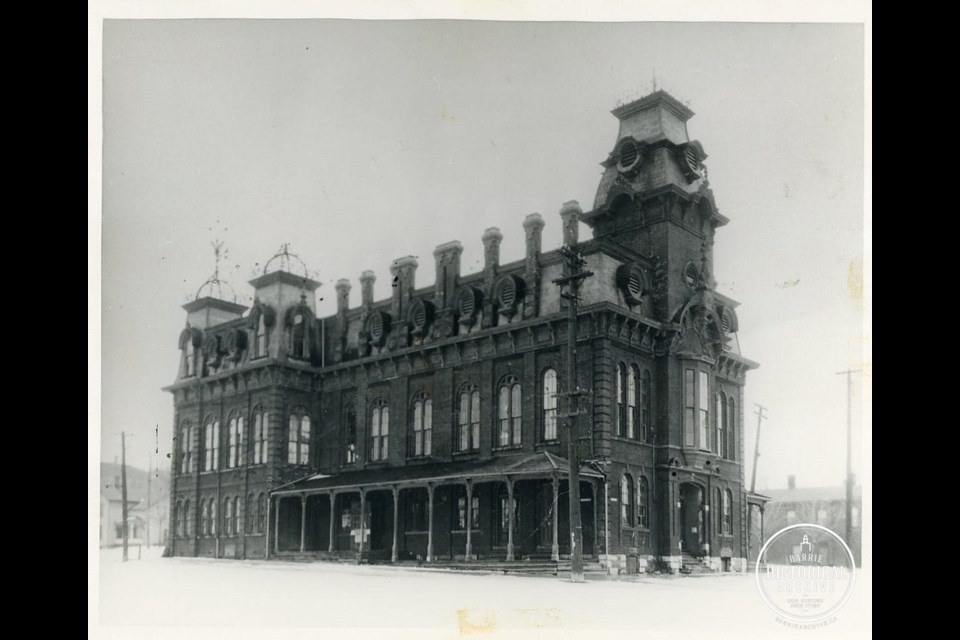When is a jail not a jail? When it becomes the only shelter available for the poor, the elderly and the mentally ill, it becomes more sanctuary than prison.
I have always imagined that the limestone fortress on Mulcaster hill housed no one but criminals. No person who ever lived within those walls desired to be there, or volunteered to be a resident therein. Didn’t the inmates plead with the judge to be set free, or failing that, spend many hours plotting an escape? Not everyone looked to avoid the jail house, I have learned, and it seems that it was often very sad circumstances that brought them to that door.
Now and then, the governor of the jail would invite a member of the local press in for a visit. In the late 1800s, the edifice was becoming overwhelmed by humanity and was keeping a far wider variety of residents than was its original purpose. The governor was hopeful that some alternate sort of arrangement could be made for the unfortunates in his care, and he was eager to let the newspapers inform the public about the sad state of affairs in the jail house.
A reporter from the ‘Northern Advance’ was sent to have a look around in April 1897. “A representative of The Advance made one of his periodical visits to that combination of prison, lunatic asylum, hospital and house of refuge commonly called the castle or the county jail.”
He commended the obvious alterations and improvements since his last visit, and noticed that the place was kept surprisingly clean, but he noted that “No one can go through the building without being struck most forcibly with the utter inadequacy of the establishment for the purposes to which it is put.”
With 24 cells, the jail was hard pressed to house its 52 inmates. Only 18 cells were sleeping cells so 29 inmates were left lying on corridor floors. Even the jailor’s own rooms were occupied as they were being used to keep elderly men.
The reporter stated that “The bulk of the inmates are paupers, many of whom should be at a hospital, as they are comparatively helpless from disease and age. There is one man there within a few months of 100 years old. One is a dangerous lunatic, and others silly, and needing attentions that a gaoler and his assistants were never intended to give.”
For many years, long before this particular article appeared in the ‘Northern Advance’, there had been growing public support for some sort of solution. Editors, reporters, ordinary town folk and jail officials alike all called for a house of refuge or industry to be built in Simcoe County.
As the reporter summed up his article, he urged the County to “at once proceed to remove a most burning disgrace from the county by making proper provisions for the helpless poor and use the gaol for what it was intended, the confinement of criminals.”
The population in the Barrie Jail was usually a mix of the friendless elderly, disabled people, mentally ill, chronic drinkers, sentenced offenders and those awaiting trial, homeless people and so-called vagrants. Frequently, the actual convicts were outnumbered by the destitute and afflicted.
Vagrancy is an old law, mostly repealed in Canada by 1972, that made it illegal for a person to be found wandering about with no job or money. It had been created in England centuries earlier in response to a chronic problem with large numbers of highway robbers, beggars and vagabonds preying on innocent people. Travelers frequently found themselves jailed for vagrancy, often 6 months at a time, if caught at loose ends meandering through towns like Barrie. Often, to be rid of the inmate, the Barrie Jail would find a way to purchase a ticket to send the vagrant back to their home community.
Finally, in 1898, the House of Refuge for Simcoe County was opened in Beeton, Ontario, at the cost of $40,000. It was a large sprawling three-storey building on 100 acres intended for farming to supply the home and occupy the more able residents.
The first 75 occupants, including only one woman, were housed there by early 1899. The institution had room for 200 residents but did not have enough beds initially.
The House of Refuge was ultra-modern at the time. It boasted telephone with electric switchboard, a laundry room with a clothes drier, dressed maple floors and oak furnishings, fire doors, a complete hospital, a kitchen worthy of a good hotel, electric light, activity rooms, washrooms with hot and cold water and a large furnace requiring three tons of coal a week.
The Barrie Jail went back to doing what it had been built to do, and lodged convicts for another 100 years until it became too archaic and too small to continue. The House of Refuge, now the site of Simcoe Manor, cared for the less fortunate for many long decades, although the stigma of going to the ‘poor house’ was, for some, a fate only slightly better than going to jail.
Each week, the Barrie Historical Archive provides BarrieToday readers with a glimpse of the city’s past. This unique column features photos and stories from years gone by and is sure to appeal to the historian in each of us.



